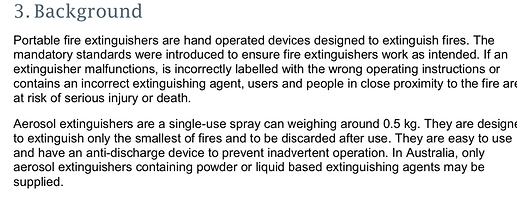Reading section 13 if their terms of service is also concerning and appears it is trying to remove any obligation under the Australian Consumer Law. The concerning wording includes…
We do not warrant that the results that may be obtained from the use of the service will be accurate or reliable.
You expressly agree that your use of, or inability to use, the service is at your sole risk. The service and all products and services delivered to you through the service are (except as expressly stated by us) provided ‘as is’ and ‘as available’ for your use, without any representation, warranties or conditions of any kind, either express or implied, including all implied warranties or conditions of merchantability, merchantable quality, fitness for a particular purpose, durability, title, and non-infringement.
In no case shall Fire One, our directors, officers, employees, affiliates, agents, contractors, interns, suppliers, service providers or licensors be liable for any injury, loss, claim, or any direct, indirect, incidental, punitive, special, or consequential damages of any kind, including, without limitation lost profits, lost revenue, lost savings, loss of data, replacement costs, or any similar damages, whether based in contract, tort (including negligence), strict liability or otherwise, arising from your use of any of the service or any products procured using the service, or for any other claim related in any way to your use of the service or any product, including, but not limited to, any errors or omissions in any content, or any loss or damage of any kind incurred as a result of the use of the service or any content (or product) posted, transmitted, or otherwise made available via the service, even if advised of their possibility. Because some states or jurisdictions do not allow the exclusion or the limitation of liability for consequential or incidental damages, in such states or jurisdictions, our liability shall be limited to the maximum extent permitted by law.
I wonder if the bolded text is inconsistent with the legal rights under the Australian Consumer Law? It appears they are selling products and services and trying to remove any obligations or warranties or responsibilities associated with their products and services.
Some of this page may also be inconsistent with Australian Consumer Law…
While this is not a legal interpretation, it appears from the above is that they don’t offer warranties on their product or services, they don’t accept responsibility for information provided on their products and services and they only accept refunds if the product if a purchased product is returned in original packaging and intact (assuming to they can sell it again). If the product doesn’t work and its failure causes damage/loss, they also are trying to remove any responsibilities they have.
I suspect the ACCC may be interested in this company and this reinforces my earlier view to avoid them as it doesn’t give a high level of trust when it apoears on face value they are trying, through fine print to bluff their customers by trying to avoid their obligations under the ACL.

